
True lilies, belonging to the Lilium family, are stunning flowering plants with large colorful petals native to temperate areas in the northern hemisphere. Lilies have been a common theme in literature and life, with “Lily” becoming the 18th most popular name for newborn girls in 2009. They are also a gorgeous addition to any garden and come in a wide variety of colors and patterns. Garden lilies are usually hybrids of wild species, cross-bred for color and strength. These 15 hybrid lilies are absolute must-haves in every garden.
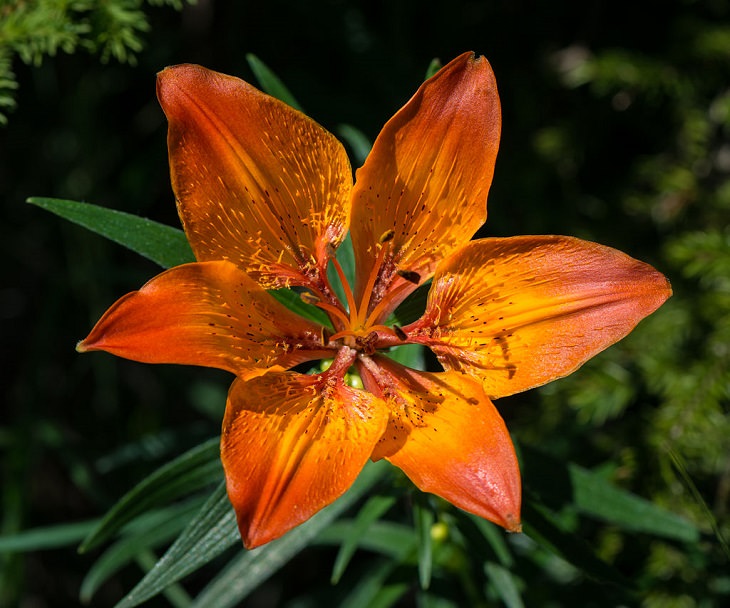
(By Uoaei1, Wikimedia Commons)
This European Lily is most common to meadows and mountainsides across Spain, Finland, and Ukraine. They grow best in calcareous soils and warm, sunny climates. However, they can also survive in acidic soils. The flowering period of this plant is from May to July.
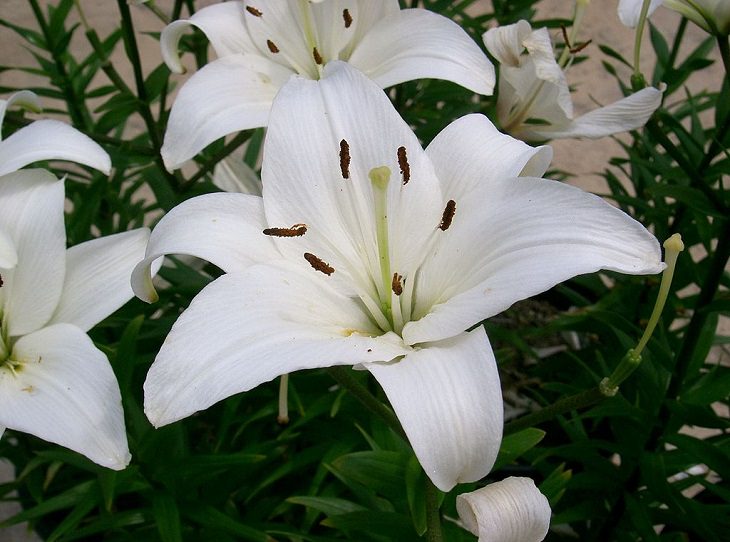
(By KENPEI, Wikimedia Commons)
This Asiatic flower is a hybrid variety of white lilies that was created in the Netherlands in the 1980s. This lily can be grown in containers using well-drained soil. It grows best when positioned under full sun or partial shade. It typically flowers between late spring and early summer.
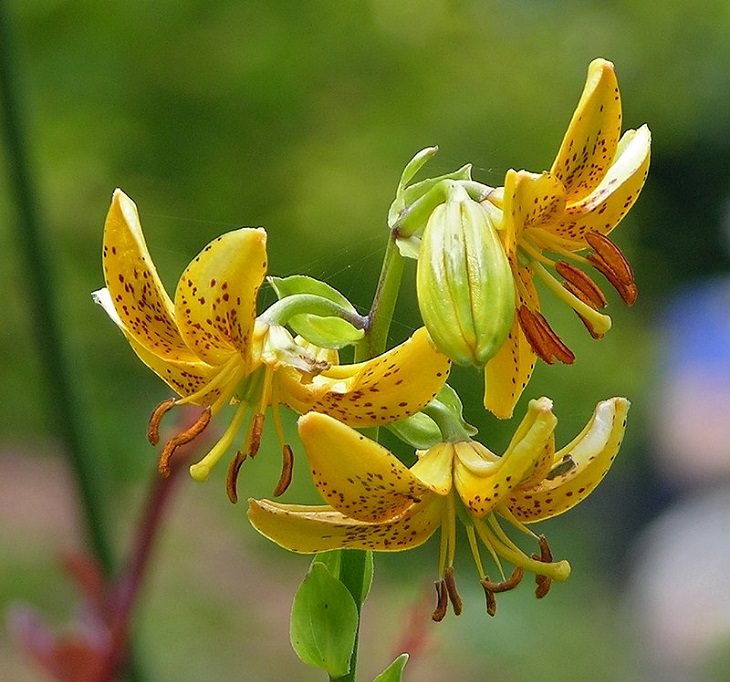
(By Derek Ramsey (Ram-Man), Wikimedia Commons)
This East Asian lily is native to Korea, Japan and certain parts of northeastern China. It grows best in compost-rich soil, and under full sun or partial shade. The flowers tend to bloom in early summer. The plants have average water needs and are easily maintained. They also attract butterflies and hummingbirds.
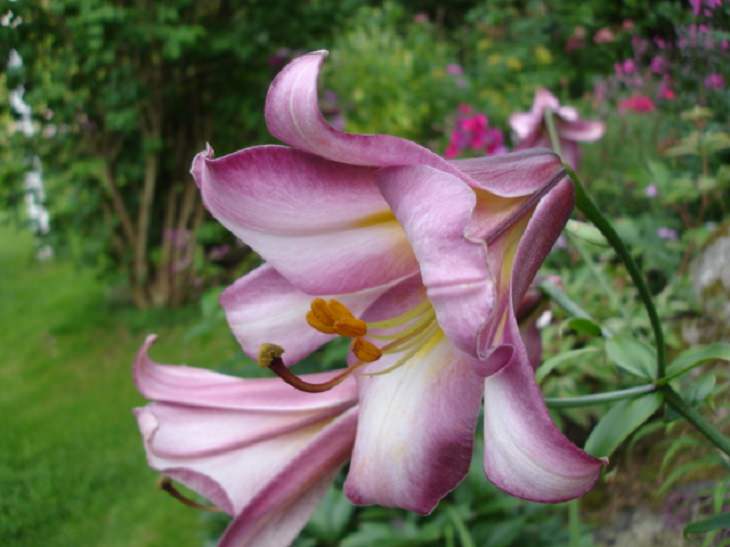
(By Ulf Eliasson, Wikimedia Commons)
This trumpet lily is an excellent border plant and well suited for growing in containers or cutting gardens. They thrive in all types of well-drained soil, provided they are kept in full or partial sunlight. It is among the most drought-resistant lilies and blooms in mid to late summer.
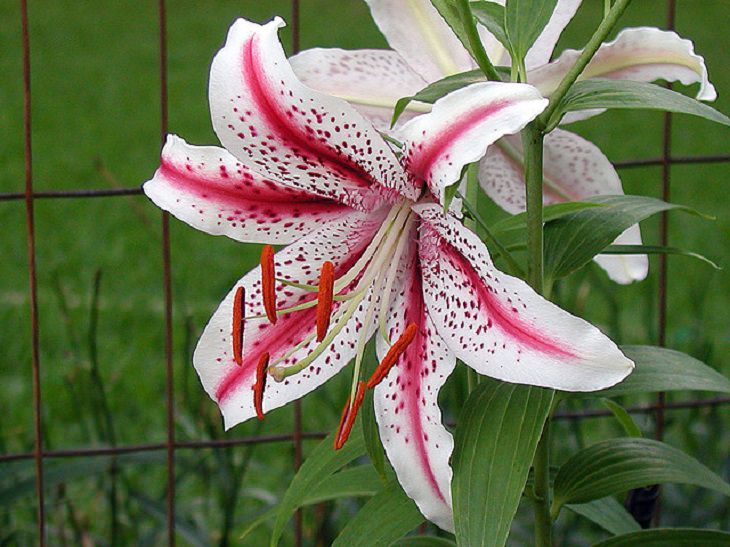
(By Bill Murray, Wikimedia Commons)
Another mid-to-late summer bloomer, this gorgeous plant can add color to any garden or home. It can be grown in containers and requires well-drained, moisture-rich soil. This flower attracts bees and butterflies but can be toxic to cats, so pet-owners should be wary.
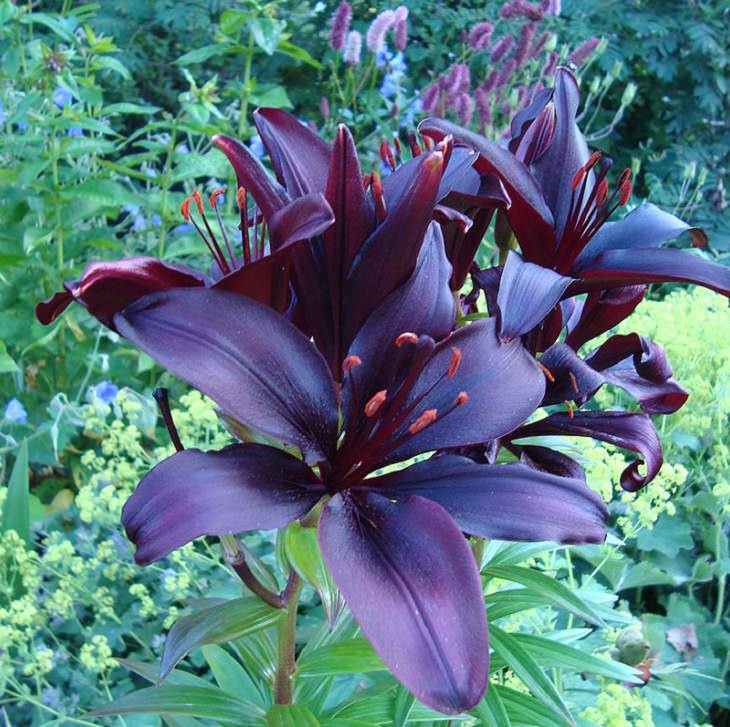
(By Uleli, Wikimedia Commons)
The dimension lily is a hybrid cut flower, best grown in cutting gardens. It’s well known for its dark red hue and, like other lilies, requires full or partial exposure to sun. These lilies bloom through the summer and are quite susceptible to lily beetles.
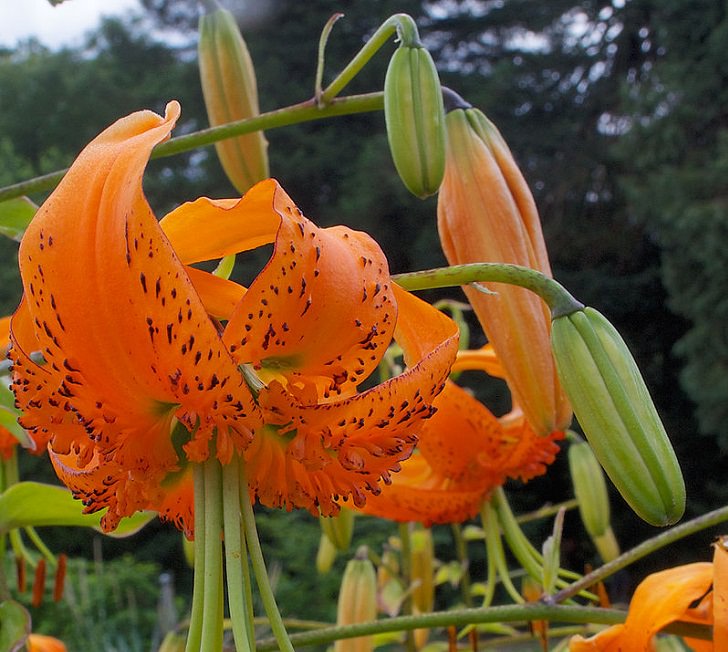
(By Patrick Ch. Apfeld, Wikimedia Commons)
Native to certain mountain regions in central China, this lily is best known for its orange hue and curved textured petals. It is a great ornamental plant, as its flowers are long-lasting. It tends to bend towards light, which is why it may require staking. Warm sunny climates are best for this plant and, unlike most other lilies, it is tolerant of high levels of lime in soil.
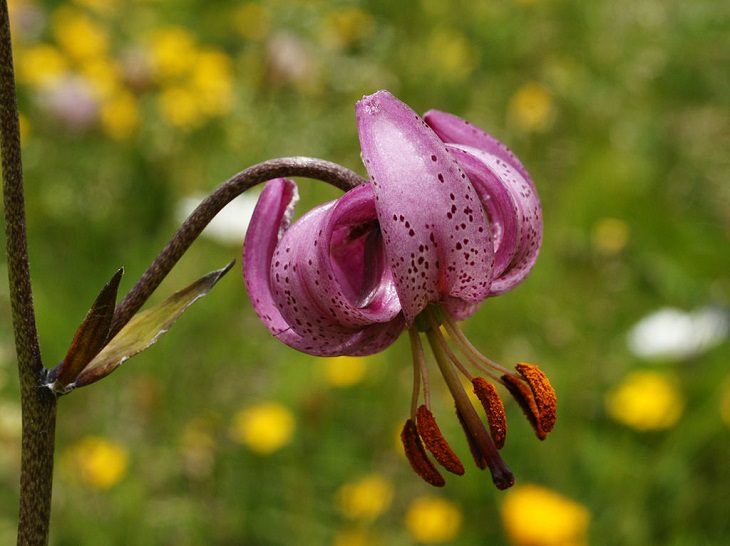
(By © Hans Hillewaert, Wikimedia Commons)
A Eurasian lily most commonly found from Portugal all the way down to Mongolia, its unique and bright color makes it an excellent border plant. Each stem carries upwards of 10 flowers and blooms in early to mid-summer. They are suited for growth in containers, require well-drained soil with slightly high alkaline levels and are highly disease resistant. They can be toxic to cats when ingested.
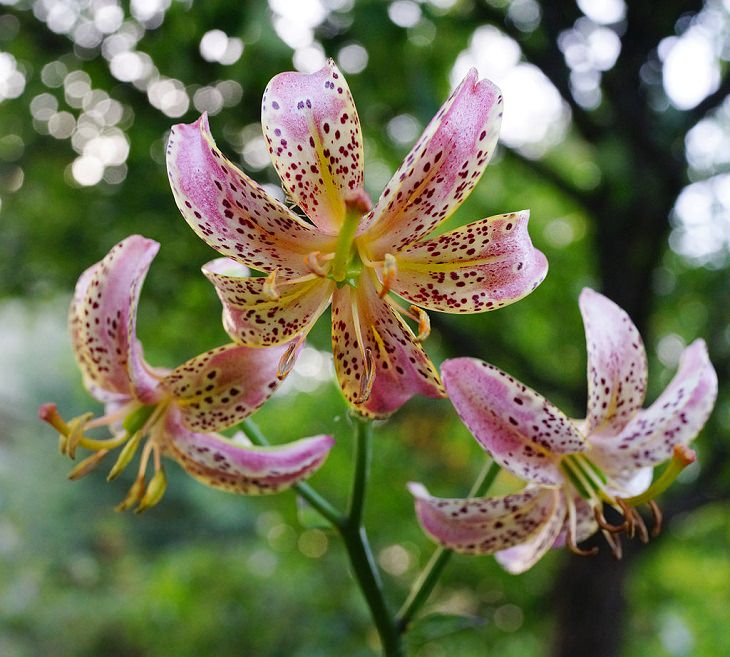
(By Dmitriy Konstantinov, Wikimedia Commons)
This beautiful lily is identifiable by its light colors and cinnamon spots. It is a hybrid of Lilium Martagon that enjoys early morning sunlight and light shade. Much like the Martagon lily, this plant requires slightly alkaline and well-drained soil and grows well in smaller spaces. These stunning flowers bloom in early to mid-summer.
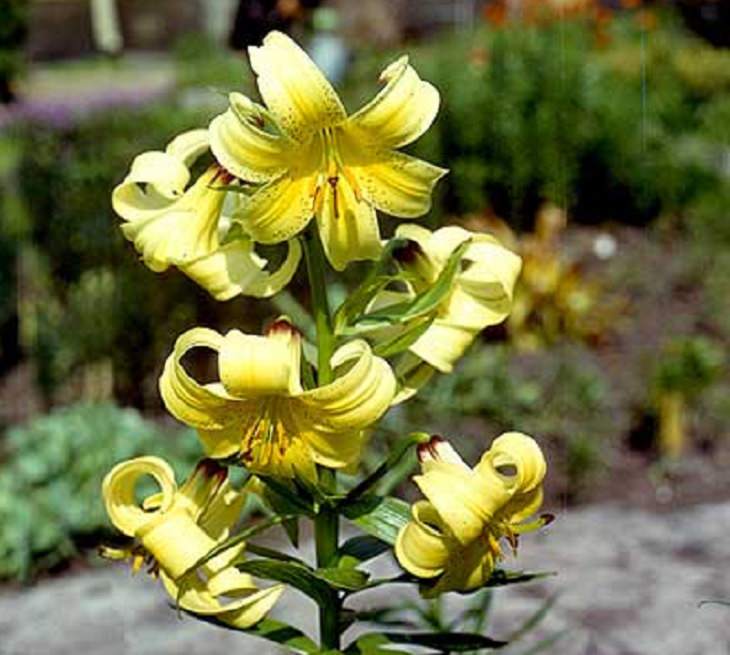
(By Chris Freeland, Wikimedia Commons)
Native to northern Turkey as well as the North and South Caucasus, this is one of the larger members of the Lily family. They thrive in grassy meadows, brushlands, mountainous areas and along the coast of the Black Sea. They require well-drained soil, moderate sunlight and the flowers usually bloom from June to July.

(By Bill Murray, Wikimedia Commons)
Blooming from early to mid-summer, this Asiatic white lily can be identified by the smattering of purple and darker colors on the petals. Like most lily hybrids and cultivars, they do not come from true seeds, but from cut flowers and make a great addition to any cutting garden.
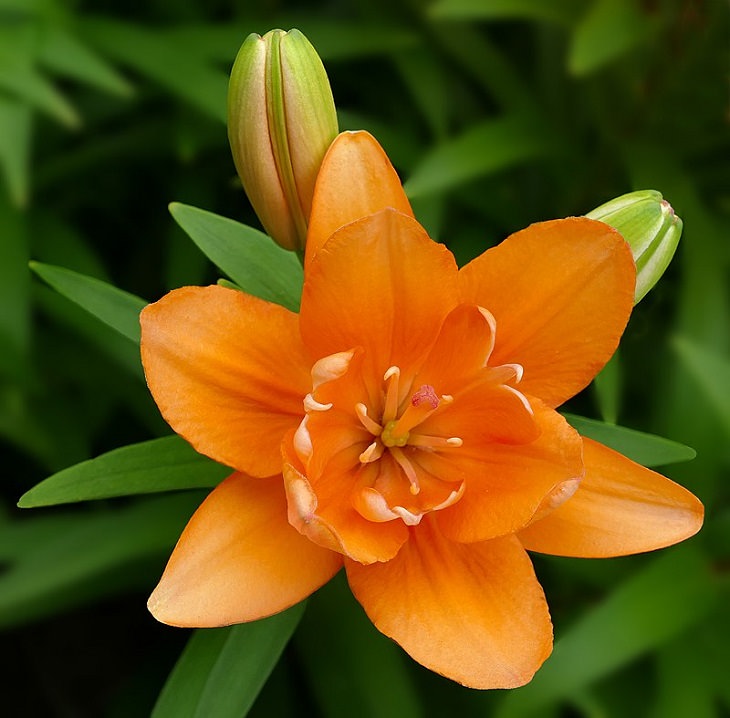
(By Jim Evans, Wikimedia Commons)
This luscious mandarin colored lily is part of a series of hybrids developed in the Netherlands called Lily Looks. This versatile lily has been bred for growth in both containers and gardens. The plant tends to lean towards the sun, making it an excellent border plant. They can thrive in sandy and clay soil, preferably rich in moisture and slightly alkaline. They require only partial shade.
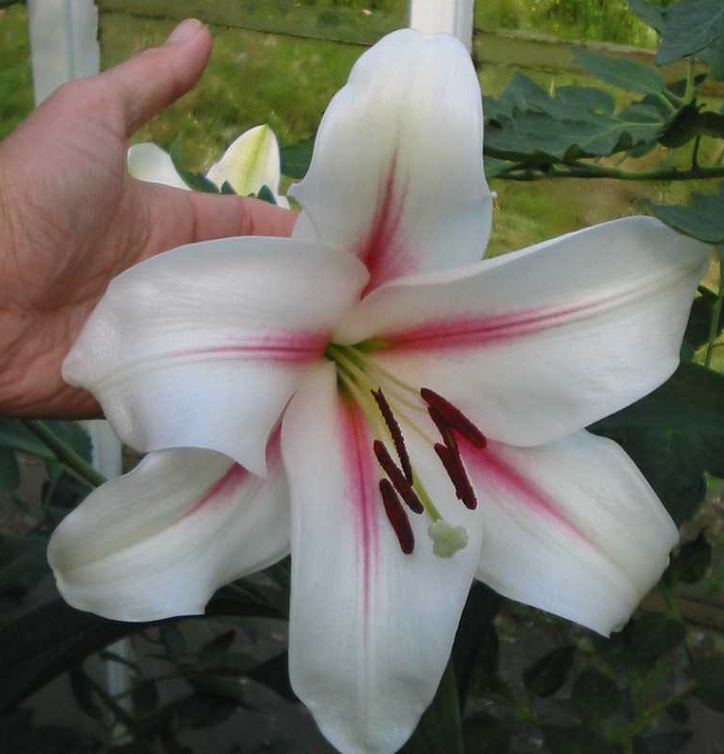
(By John Lykkegaard, Wikimedia Commons)
This light-colored trumpet lily displays a mix of pink and white shades and has ruffled petals. It grows well under full sun, and requires little to no shade. This particular flower blooms throughout summer and releases a pleasant fragrance. These lilies are best for cutting gardens and require well-drained soil.
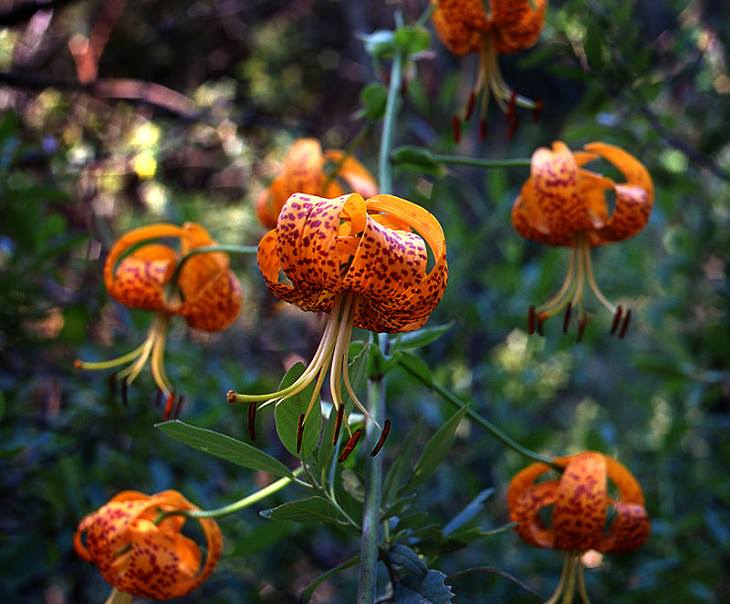
This animal-print patterned flower is indigenous to California, Baja California and Oregon, and, as expected, it is quite popular for its uniquely decorated flowers. It is a true lily and often grown as an ornamental plant. It thrives in such climates as those found in the Sierra Nevada and the California chaparral and woodlands, preferring partial shade and moist soil.
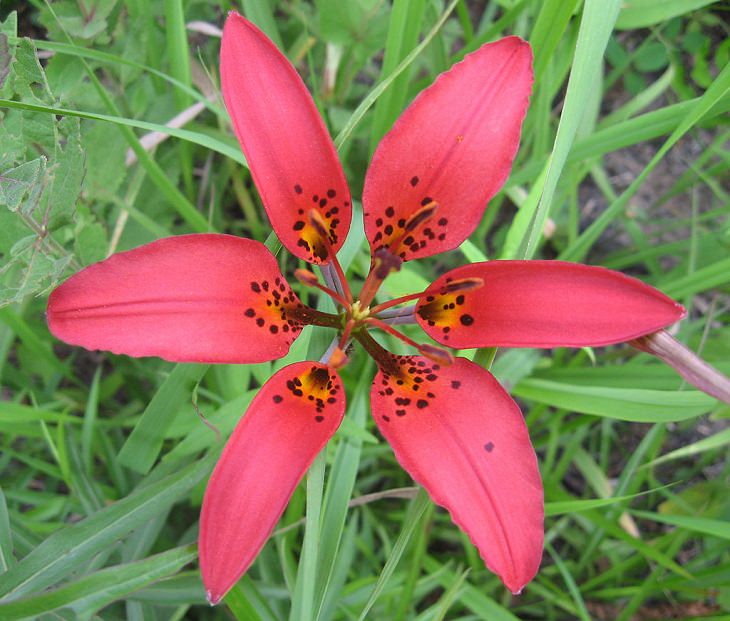
(By Mason Brock (Masebrock), Wikimedia Commons)
Despite being called the Philadelphia lily, this flower is spread across the North American continent, from British Columbia to Quebec in Canada, and throughout the Rocky Mountains and the Appalachian Mountains in the United States. Full sun and well-drained soil are ideal for growth, and it's important to remember that this species can be toxic to cats.